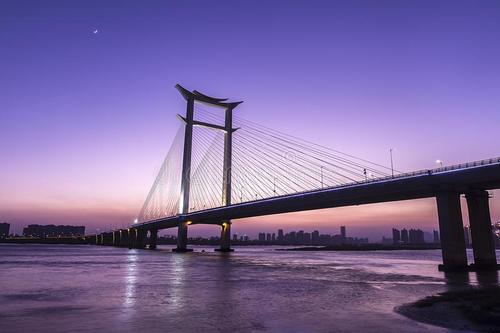Quanzhou, a city in east China's Fujian Province, which is widely believed to be the starting point of the ancient Maritime Silk Road.
In The Travels of Marco Polo, Marco Polo, the famous Italian traveler on the Silk Road, mentioned that Citong City (or: City of Erythrina) was once one of the world's biggest ports. In Southeast Asia in the Five Dynasties and Ten Kingdoms Period, citong, or the erythrina that bear fiery red flowers every spring, were cultivated widely in the region to a circumference of ten kilometers, hence the nickname "Citong City" was born. Quanzhou, situated on the southeastern coast of Fujian, was an important harbor and the starting point on the Maritime Silk Road. In the Sui and Tang Dynasties, silk was the main exported product. In the Song and Yuan Dynasties, porcelain substituted silk as the main exported product and the foreign trade reached the peak of prosperity. At that time, Dehua, well known for its ceramic whiteware, was an important whiteware capital. The South China Sea No.1 or Nanhai No.1, an 800-year-old treasure-bestowed merchant ship discovered on the Maritime Silk Road of the South China Sea, testifies to the once-flourishing whiteware trade.
Dehua ceramic whiteware in the Maritime Silk Road years
The four great travelers of the medieval West -- Marco Polo, Ibn Battuta, Giovanni Marignolli, and Odoric -- all wrote of the openness and prosperity of Quanzhou. The North African traveler Ibn Battuta compared it to the Egyptian port of Alexandria, and Marco Polo described it as "one of the largest ports in the world." As a booming trade centre, Quanzhou also gathered merchant ships from Southeast Asia, India, the Arabian Peninsula and even Europe. Businessmen carried with them all sorts of precious and exotic items, and went back on their ships fully loaded with Chinese silk and porcelain. Today, lots of historical sites pertinent to the Maritime Silk Roadremain in Quanzhou, like the Qingjing Mosque and Kaiyuan Temple.
Qingjing Mosque in Quanzhou, Fujian
The QingJing Mosque is a famous attraction which you should not miss when you're in the city. Visiting the mosque would give you insights on its unique architecture. Imagine how the Arabs and Chinese at those ancient times interacted!The mosque, built and repaired by Arab Muslims, reflects the friendship and cultural exchange between China and Arabic countries. Imitating a mosque in Damascus, Syria, it was initially built in 1009 and is the oldest Arab-style mosque in China today. This magnificent mosque covers an area of 2,500 square meters and features a gate, the Fengtian Hall , and the Mingshan Hall. Be a 'witness' through these ancient past while a "rush" feeling goes up and down your spine in the mosque.
Kaiyuan Temple in Quanzhou, Fujian
In the Maritime Silk Road years, seven different religions coexisted in Quanzhou. They were Buddhism, Taoism, Christianity, Catholicism, Islamism, Brahmanism and Manichaeism. Though there is no Hinduism practiced in Quanzhou now, some historical remains had been here in Quanzhou for centuries, and became a part of the décor of other religions. The famous Kaiyuan Temple is the representative. The temple was built in 686 (during the reign of Empress Wu Zetian ). As the largest Buddhist temple in Fujian Province, Kaiyuan Temple has attracted many domestic and foreign travelers.Though being a Buddhist temple, the Kaiyuan Temple was decorated with elements of Hinduism in during that time. Behind its main hall, Mahavira Hall, there are some columns decorated by with Hinduism carvings.




 A single purchase
A single purchase









